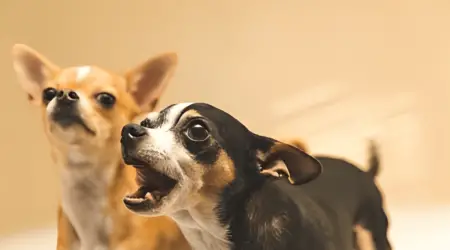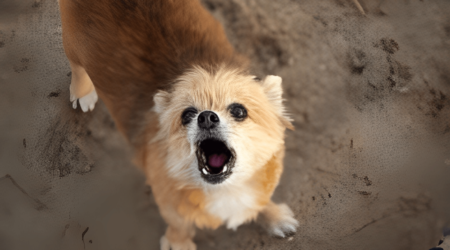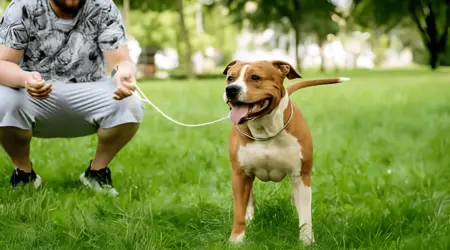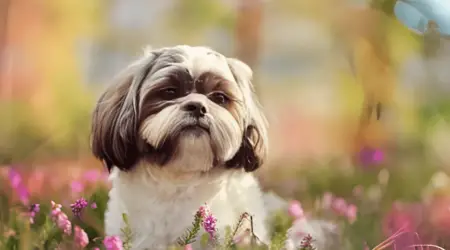Why Is My Shiba Inu Tail Down: Comprehensive Guide
Shiba Inus, renowned for their spirited personality and fox-like appearance, communicate a wealth of emotions through their distinctive tails. A sudden downturn in a Shiba Inu’s tail can be a cause for concern, prompting owners to delve into the intricate language their pets employ.
We’ll explore if it’s just their chill mode, a sign of ouchies, or maybe something deeper like worries or boredom. We’ll also answer what you can do to help, whether it’s a cuddle session, a playtime adventure, or a friendly trip to the vet. Ready to decode your Shiba’s tail talk? Let’s dive in!
The Natural Shiba Inu Tail Language
Shiba Inus are renowned not only for their striking appearance but also for their expressive tails, which serve as a unique form of communication. Understanding the natural Shiba Inu tail language is essential for any owner seeking to connect with their furry companion on a deeper level. In this section, we delve into the intricacies of the Shiba Inu tail language, exploring the various positions and movements that convey a spectrum of emotions. From joyful greetings to subtle warnings, the tail becomes a dynamic indicator of your Shiba Inu’s mood and feelings. Let’s decode the natural language spoken through this distinctive feature.

Emotional Factors
When it comes to expressing their emotions, the Shiba Inu is a master of the subtle art of tail language. A slight twitch, a low droop, or a playful curl – each nuance speaks volumes about what’s going on inside your furry friend’s head.
But unlike some breeds where a wag equals happy and a still tail means meh, Shibas are a whole different story. Their emotions are complex, and so is their tail language. So, let’s grab a squeaky toy and dive into the emotional world of the Shiba Inu, one tail position at a time:
Happy and Playful:
- The Proud Plume: If your Shiba’s tail is held high and slightly curled, like a flag waving in the wind, chances are they’re feeling confident and playful. A happy tail might even give a little wiggle or two during playtime, especially when chasing that elusive squirrel or wrestling with their favorite plushie.
Fearful or Anxious:
- The Tucked Tail: A tucked tail, tucked close to the body, is often a sign of fear or anxiety. Imagine a shy child hiding behind their parent’s leg that’s the energy this tail position gives off. If your Shiba’s tail is tucked, look for other signs of nervousness, like flattened ears, avoiding eye contact, or whimpering. This could be caused by a new environment, a loud noise, or even an unfamiliar person.
Submissive or Unsure:
- The Low Wag: A slow, low wagging tail, held slightly below the body, can indicate submission or uncertainty. Think of it as a peace offering, a way your Shiba says “Hey, I mean no harm.” This might happen when meeting a new dog, during training, or even when asking for belly rubs (because, let’s be honest, who can resist that?).
Bored or Frustrated:
- The Still Tail: While a still tail doesn’t always mean something’s wrong, it can be a sign of boredom or frustration. If your Shiba has been cooped up inside for too long, their tail might just hang there like a deflated balloon. This is a good time to break out the toys, head to the park, or engage in some mental stimulation to get those tails wagging again.
By understanding the emotional nuances of your Shiba’s tail, you can build a stronger, deeper bond with your furry companion. You’ll be able to anticipate their needs, provide comfort when they’re scared, and unleash their playful spirit with just the right wiggle of your own!
Health Related Issues
A Shiba Inu’s tail position can also be influenced by various health related factors.
1. Physical Discomfort or Pain
a. Common Health Issues:
– Tail injuries, sprains, or fractures.
– Anal gland problems causing discomfort.
b. Recognizing Signs:
– Changes in tail movement and position.
– Shiba Inu’s response to touch and handling.
c. Seeking Veterinary Attention:
– The significance of seeking veterinary advice while diagnosing.
– Treatment options and rehabilitation for physical discomfort.
2. Trauma or Injury
a. Signs of Trauma:
– Visible injuries or wounds on the tail.
– Changes in behavior indicating pain.
b. Prompt Medical Intervention:
– Immediate steps to take if trauma is suspected.
– Recovery and rehabilitation for a Shiba Inu with tail injuries.
Maintaining a vigilant eye on your Shiba Inu’s physical health is crucial for their overall well being. Regular veterinary check ups, prompt identification of potential issues, and appropriate medical care are key elements in ensuring your pet leads a happy and pain-free life.
Environmental Factors
The surroundings and environment in which a Shiba Inu lives can significantly impact their behavior and, consequently, their tail position. Understanding these environmental factors is essential for creating a comfortable and secure space for your furry companion.
1. Unfamiliar Surroundings
a. Sensitivity to Change:
– Shiba Inu’s natural inclination towards routine.
– How changes in environment can trigger stress.
b. Strategies for Adjustment:
– Gradual introductions to new surroundings.
– Providing familiar items for comfort.
2. Negative Experiences
a. Impact on Behavior:
– How negative experiences can affect a Shiba Inu’s demeanor.
– Signs of stress or fear stemming from past events.
b. Building Positive Associations:
– Counter conditioning techniques for positive reinforcement.
– Creating positive experiences to override negative associations.
A Shiba Inu’s tail position can be a reflection of their comfort or discomfort in their surroundings. By being mindful of environmental factors and taking steps to create a positive atmosphere, you can contribute to a happier and more relaxed state for your Shiba Inu.
What to Do When Your Shiba’s Tail is Down:
When you notice that your Shiba Inu’s tail is down, it’s essential to approach the situation with care and consideration. Here are some steps to take when you observe this behavior:
1. Observe Your Shiba Inu’s Body Language:
- Pay attention to other signs of distress or discomfort.
- Look for cues in their overall body language, ears, and eyes.
2. Identify Potential Causes:
- Consider recent changes in the environment.
- Assess any recent experiences that might have caused stress or fear.
3. Rule Out Health Issues:
- Gently examine your Shiba Inu’s tail and surrounding areas for any signs of injury or discomfort.
- If you suspect health issues, consult with a veterinarian for a thorough examination.
4. Create a Comfortable Environment:
- Ensure your Shiba Inu has a safe and familiar space.
- Provide comforting items such as their favorite toys or bedding.
5. Practice Positive Reinforcement:
- Use positive reinforcement techniques to reward positive behavior.
- Encourage positive associations with experiences that may have caused stress.
6. Establish Routine and Consistency:
- Shiba Inus thrive on routine, so try to maintain a consistent schedule.
- Predictability can help alleviate stress and anxiety.
7. Professional Training or Consultation:
- If behavioral issues persist, consider seeking the help of a professional dog trainer or behaviorist.
- They can provide guidance on addressing specific behavioral concerns.
8. Regular Veterinary Check-ups:
- Plan routine examinations with your veterinarian to keep an eye on the general health of your Shiba Inu.
- Address any health concerns promptly to prevent prolonged discomfort.
9. Be Patient and Gentle:
- Shiba Inus are known for their independence, so approach them with patience and gentleness.
- Avoid forceful actions that may cause additional stress.
10. Consult with Breed Experts or Communities:
- Reach out to Shiba Inu breed experts or online communities for advice and shared experiences.
- Other Shiba Inu owners may offer insights into similar situations.
Remember, every Shiba Inu is unique, and the reasons behind a lowered tail can vary. By taking a thoughtful and considerate approach, you can work towards understanding and addressing the specific needs of your beloved Shiba Inu.
Conclusion
Shiba Inu’s downcast tail is a nuanced form of communication, reflecting a range of emotions and potential concerns. Whether influenced by emotional stress, health issues, or environmental factors, attentive and compassionate care is paramount. By decoding their unique tail language and responding with patience, positive reinforcement, and, when necessary, professional guidance, you can foster a supportive environment for your Shiba Inu.
Regular veterinary check-ups and a commitment to understanding their individual needs ensure a happy, tail-wagging companion. Through this holistic approach, you strengthen the bond with your Shiba Inu, promoting a lifetime of health, happiness, and mutual understanding.
FAQs
1. Why is my Shiba Inu’s tail down, and is it always a cause for concern?
Unravel the mysteries behind your Shiba’s tail language. Discover the various factors, from emotional states to health considerations, that contribute to a lowered tail, and learn when it’s time to seek professional advice.
2. How can I create a positive environment to uplift my Shiba Inu’s tail?
Explore practical strategies for transforming your Shiba’s surroundings into a haven of comfort. From gradual introductions to positive reinforcement techniques, find ways to enhance their well-being and encourage a more elevated tail posture.
3. What role does routine play in my Shiba Inu’s tail language?
Delve into the importance of consistency for Shiba Inus. Learn how maintaining a predictable routine can alleviate stress and contribute to a more contented and confidently wagging tail.
4. Can professional training help address my Shiba Inu’s tail-related concerns?
Consider the benefits of professional guidance in deciphering and addressing tail-related behaviors. Explore how expert trainers and behaviorists can provide tailored solutions for a happier, tail-up relationship with your Shiba Inu.












Leave a Reply